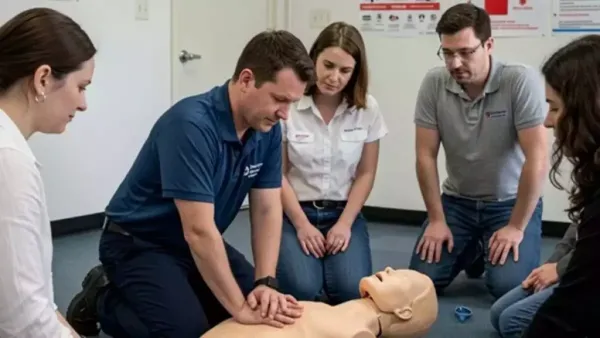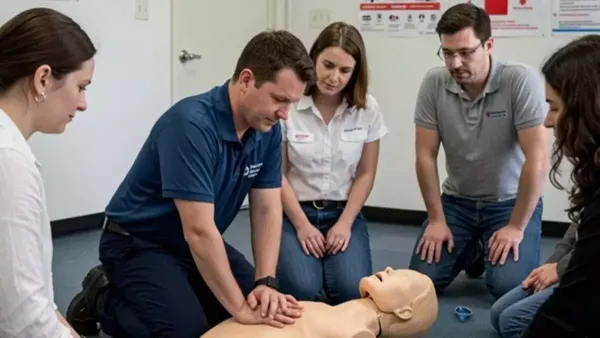

Out of hospitals in the United States of America, there are more than 350,000 cardiac arrests. This shocking figure highlights the important need to learn CPR (cardiopulmonary rescuation) for all. When someone has cardiac arrest, it matters every second. Immediate CPR can also double or trip the possibility of a person escapes – so it is clearly something that we all should know about.
With the increase in online education, taking CPR class has never been so easy or convenient. Whether you are a busy professional, parents, or someone who wants to be ready, offer online CPR course flexibility and access. However, before signing up for CPR certification, there are some important factors to consider. Some of these factors may include courses recognition, covered content and the best ways to practice skills you learned.
In this article, we will cover whatever you need to consider before signing up for online CPR class, so that you can feel ready and competent to save someone’s life when the time comes.
Understand CPR
Cardiopulmonary rescue (CPR) is a life -saving technique that is used in emergency when someone’s breath or heartbeat stops, such as 1 after a heart attack or drowning. CPR can help maintain blood flow to the brain and other organs until medical professionals arrive. The American Heart Association recommends the introduction of CPR from chest pressure – start pouring out loud and rapid pressure at the rate of 100–120 pressure per minute in the middle of the person’s chest.
The basic CPR for an adult involves checking the surroundings for safety, calling emergency services when needed and pressing the chest. If you are trained in CPR, this includes the person’s head slightly bent back, closing his nose and breathing in his mouth. If you are not trained, the consistent chest pressing CPR is best.
Why choose online CPR classes?
Online CPR classes are a convenient and flexible way of learning life-saving skills. You can study at your speed and fit the lesson in your schedule, which is helpful if you have a busy lifestyle or do not have access to individual classes, many courses also access you to learning material for a certain period, so that whenever you need refresher, you can review them.
Some online CPR courses also use interactive tools and virtual reality (VR) technology. Such features create real emergency situations, which makes the learning experience more attractive and helps you feel more confident about CPR in real life.
Now, the question is, should you choose online classes instead of traditional classes? By the way, many people get confused about who should choose from online or traditional CPR classes. However, online CPR classes provide several benefits compared to traditional classes. With the increase in the Internet, more people are choosing the option of online CPR certification.
Considable factor before taking CPR class online
CPR certified is a smart decision, but how do you ensure that the class you have chosen are equally smart? Since CPR certification is important, it is necessary to choose a class to meet high standards. With so many options, some may not be equal for different reasons.
So, how can you sort out of bad options and get a good option? Here is the top things worth seeing in a quality online CPR class.
1. Recognition and Certification
Recognition is very important when choosing an online CPR course as it ensures that training follows the approved medical guidelines and is recognized by hospitals and employers.
One thing that most people do not know is that without recognition, your certification cannot be accepted in emergency situations or professional environment, even if you have completed the course. For example, a person who completes the non-recognized CPR course may not be legally allowed to CPR in the workplace setting, unable to help him in an emergency.
Recognition ensures that your training is not only valid but also reliable.
2. Course content
When choosing an online CPR class, it is necessary to ensure that the course includes all the necessary techniques including CPR for adults, children and infants, as well as how to use AED (automatic external defibrilater) and how to handle the emergency conditions of the knee.
Interestingly, CPR on infants requires much mild pressure than adults, as their bones are more delicate